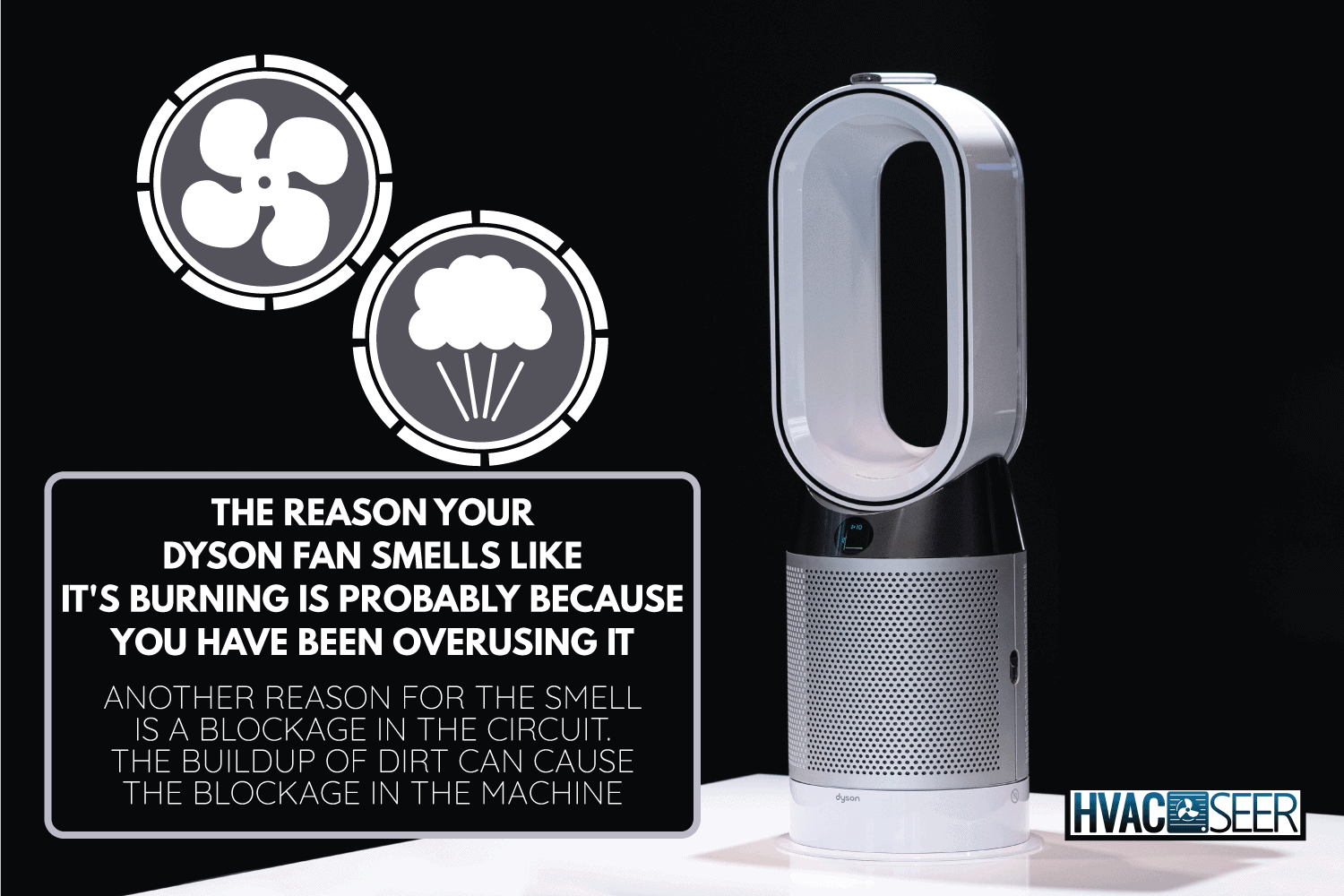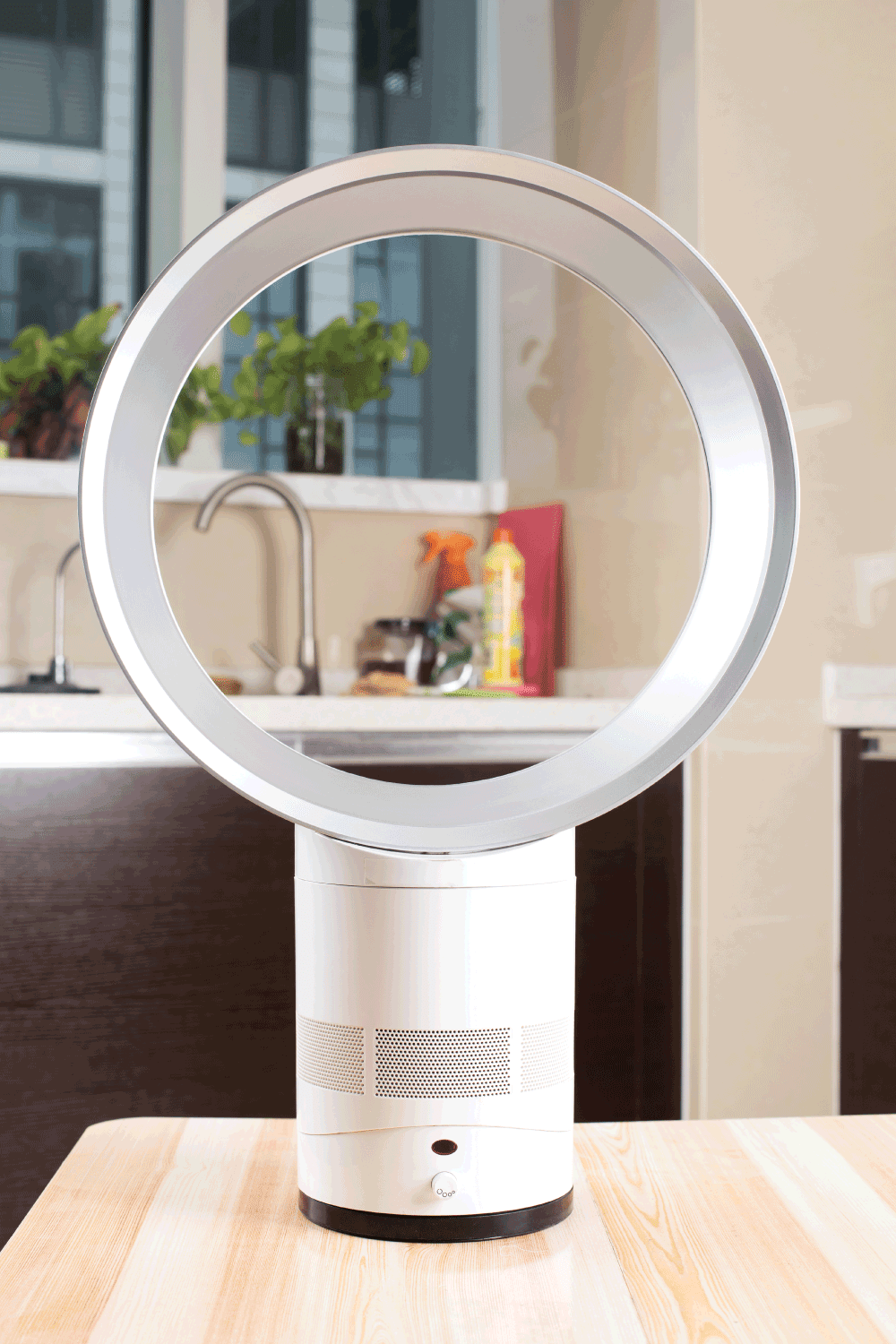Changes in temperature can cause health issues. It's a good thing there are ways to maintain the temperature at home. One effective option is using a Dyson fan to circulate the air, but what if your Dyson fan has a burning smell? We've taken a look into this matter so you don't have to!
The reason your Dyson fan smells like it's burning is probably because you have been overusing it, which can cause a malfunction in the circuit. A smell like burnt rubber or plastic in a Dyson fan can indicate that the unit is overheating.
Another reason for the smell is a blockage in the circuit. If you do not regularly clean and maintain your Dyson fan, there will be a buildup of dirt that can cause the blockage in the machine.
Since prevention is always better than the cure, keep reading this post as we dive into further details about why a Dyson fan can have a burning smell. We also cover things you should consider in order to maintain your Dyson fan to avoid possible future problems. With that being said, let's get right into it!

Dyson Fan Has A Burning Smell - Why And What To Do?
Unlike regular fans that have grills and blades, a Dyson fan is bladeless, making it safer for kids. It releases a thin, smooth stream of air from an oval or ring-shaped opening.
Although it does not decrease the temperature inside a room, it helps circulate the air within the area.
Even thought it doesn't have the typical features of a pedestal fan, a Dyson fan can still suffer from similar problems that happen to regular fans. There can be two reasons why a Dyson fan gives off a burning smell.

The Device Is Overheating
Just like any other device, a Dyson fan is prone to overheating when constantly used on a regular basis.
When a Dyson fan is overused, the wires inside the motor system or even the inner gears and blades can can be damaged.
You can prevent the device from overheating by using it for no more than nine hours and letting it rest for 12 hours. You can keep following this cycle to prevent possible overheating.
Overheating can cause system malfunction and an electrical short circuit in the device. The increase in temperature inside the machine can burn the tiny wirings, causing serious internal damage.
Keeping the Dyson fan from overheating will prevent internal damage that if left unresolved, can cause fire hazards. Maintain your Dyson fan by regularly inspecting it and by following a certain cycle of usage.
You can also resort to seeking professional help, which Dyson offers to their customers.
Although Dyson fans are designed to automatically turn off when overheating, it is still recommended to regularly check your device.
Click here to see this Dyson tower fan on Amazon.
The Device Is Clogged
Another possible reason why a Dyson fan will produce a burning smell is because there is a clog in the device. What separates Dyson fans from regular fans is its air filtering feature. It helps collect dust and dirt particles in the air as it circulates the airflow.
Blockages can build up inside the device if you do not regularly clean your Dyson fan. A clogged machine can cause serious internal problems so that the motor parts will have a hard time working or the machine will malfunction.
You can remove the blockage by cleaning the Dyson fan. Follow these steps if you do not know how to do it.
1. Unplug The Device
Unplugging the device before cleaning the Dyson fan will prevent serious injuries caused by electricity. Other than that, it will also allow you to move the device around and clean it easier.
2. Wipe The Fan Using a Damp Cloth
After unplugging your Dyson fan, grab a damp cloth and gently wipe the oval or ring opening of the fan. Since Dyson fans do not have blades or grids that are much harder to clean, you can just swiftly wipe the cloth on the outside parts of the fan.
This procedure will not take long. You can also use baby wipes to clean the outer sides of the fan.
3. Vacuum The Back Vents
Begin by searching for the circular grooves on the back part of the device. These are the fan's vents. Most dust and dirt gets stuck in this part, so you need to use a vacuum to suck all the dust and dirt that are clogging the vents.
Attach a smaller tube to your vacuum and work until the vents are clean.
4. Clean The Inside Fan
Hold the upper and lower parts of the fan and twist them in a counterclockwise direction until they loosen. Separate the parts carefully and find the mechanical parts of fan.
Remove the dust with a paper towel. You can use a damp cloth or wet wipes to clean the rest of the inner part of the fan until you get rid of all the dirt particles.
5. Reassemble The Fan
After making sure that the inner portion of the fan is free from dirt, you should wait for the other parts to dry before you reassemble it. Connect the upper and lower parts of the fan and gently twist it in a clockwise motion until it is securely attached.
Why Does My Dyson Fan Keep Turning Off?
Dyson fans will automatically shut down when the selected temperature is lower than the room temperature.
You can resolve this issue by selecting a higher temperature degree of your target temperature. The device has an LED screen which will show you your selected temperature.
Another reason the fan might turn off is because the device needs to be cleaned. After getting rid of all the dirt in your fan, you can plug it again and see if the device will stop from shutting down.
If the device continues to turn off even after you adjusted the target temperature and cleaned it off, the reason might be because of a broken mechanical part such as a loose screw or a faulty motor.
Continuous overusing of the device may also cause the Dyson fan to turn off on its own. Make sure to not overuse the Dyson fan and do regular maintenance.
Lastly, the Dyson fan's filter might need some replacement that's why the device keeps on shutting down. It is recommended to replace the filter once a year.
Click here to see this Dyson air purifier fan on Amazon.
Do Dyson Fans Rotate?
Yes, they do. Although Dyson fans are said to be bladeless, just like other oscillating fans, a Dyson fan has blades hidden inside stand of the device. It does oscillate like regular fans.
There is an option in the device that allows you to choose whether to let the fan rotate or not. You just have to press the oscillation button for the fan to start rotating.
If your Dyson fan does not rotate, restart the device. Select the airflow speed and press the oscillation button again.

How Do I Make My Dyson Fan Cooler?
A Dyson fan can either act as a heater or a cooler. Although it does not have an air conditioning function, it helps cool down the room temperature by circulating the air.
If you want to make the fan cooler, press the "Cooling Mode" button. The device will automatically switch from "Heating Mode" to "Cooling Mode".
Is a Dyson Fan Better Than a Regular Fan?
Dyson fans offer many advantages. They have built-in filters that filter the air to get rid of dust and dirt particles before circulating the air. This is one feature that regular fans do not have.
Another advantage of using a Dyson fan is it does not have grids nor outer blades that are not kid friendly.

Wrapping It Up
Just like other devices or machines that you have, a Dyson fan also needs regular maintenance in order for you to prevent it from getting damaged.
When your Dyson fan gives off a burning smell, it is a clear sign that the fan needs some attention. Do not ignore signs like this to prevent serious problems in the future, and don't forget that your Dyson fan needs proper care, too.
Before you go, check out these related articles, too.


